Publications

Mongolia: Belgium’s contribution through the Special Fund for Emergency and Rehabilitation Activities (SFERA) – Anticipatory Action window
01/2023
In Mongolia, the frequency, intensity and unpredictability of weather extremes such as the harsh winter (dzud), drought, snow and dust storms, heavy rainfall and flooding have tripled in the last decade, heavily impacting traditional livestock-based livelihoods.
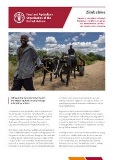
Zimbabwe: Sweden’s contribution through the Special Fund for Emergency and Rehabilitation (SFERA) – Anticipatory Action window
01/2023
Zimbabwe has been plagued by multiple hazards over the last decade, suffering from a series of climatic shocks including cyclones, droughts, floods and pest infestations coupled with severe economic challenges.

Cameroon: Belgium’s contribution through the Special Fund for Emergency and Rehabilitation Activities (SFERA)
01/2023
As a result of heavy rains (July–September 2022) and river floods (October–December 2022) in Cameroon, fields were destroyed, animals were lost and agricultural livelihoods were disrupted.
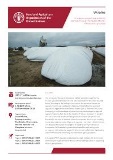
Ukraine: Emergency projects supported by Germany through the Federal Ministry of Food and Agriculture
01/2023
The outbreak of the war in Ukraine on 24 February 2022 is significantly impacting rural livelihoods and food value chains at the national and global levels.

Subregional Central America – Hurricane Julia and torrential rains: Urgent call for assistance
01/2023
For the first time in history, northern Central America suffered a third consecutive year of La Niña events.
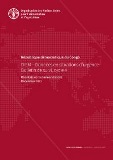
République démocratique du Congo: DIEM – Données en situations d’urgence, Bulletin de suivi, cycle 4
01/2023
Ce bulletin sur le suivi des Données dans les situations d'urgence (DIEM-Suivi) présente les résultats de la troisième évaluation réalisée en République démocratique du Congo en septembre et octobre 2022.
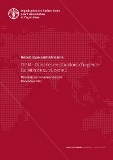
République centrafricaine: DIEM – Données en situations d’urgence, Bulletin de suivi, cycle 3
12/2022
Ce bulletin sur le suivi des Données dans les situations d'urgence (DIEM-Suivi) présente les résultats de la troisième évaluation réalisée en République centrafricaine en septembre et octobre 2022.
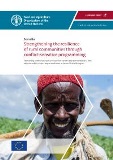
Somalia – Strengthening the resilience of rural communities through conflict-sensitive programming: Translating context analysis and conflict-sensitive recommendations into adjustment in project implementation in Lower Shabelle region
12/2022
This learning brief documents learning around promising programme approaches that can support decision-making and resource allocation processes towards durable solutions to food crises.
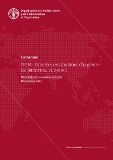
Cameroun: DIEM – données en situations d’urgence, Bulletin de suivi, cycle 3
12/2022
Ce bulletin sur le suivi des Données dans les situations d'urgence (DIEM-Suivi) présente les résultats de la troisième évaluation réalisée au Cameroun en septembre et octobre 2022.
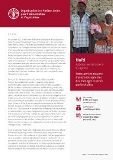
Haïti: Appel à une assistance d’urgence
12/2022
En octobre 2022, le Ministère de la santé publique et de la population a annoncé la résurgence du choléra en Haïti. Des cas ont été confirmés à Port-au-Prince et d’autres départements du pays sont sous surveillance.
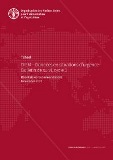
Tchad: DIEM – Données en situations d’urgence. Bulletin de suivi, cycle 3
12/2022
Ce bulletin sur le suivi des Données dans les situations d'urgence (DIEM-Suivi) présente les résultats de la troisième évaluation réalisée au Tchad en août et septembre 2022.
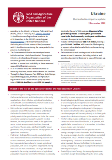
Ukraine: Humanitarian response update, 2 December 2022
12/2022
This document provides an up-to-date summary of the humanitarian situation in Ukraine and the response of the Food and Agriculture Organization of the United Nations (FAO) on the ground.

Ukraine: Impact of the war on agriculture and rural livelihoods (December 2022)
12/2022
The Food and Agriculture Organization of the United Nations has conducted a nation-wide rural household survey in Ukraine, targeting 5,230 rural households across the country, with the objectives of: i) collecting necessary evidence on the impact of the war on rural livelihoods to inform programming decisions and support advocacy efforts; and ii) complementing the data from consolidated and ongoing analyses, including sectoral damage and loss assessments.

Ukraine: FAO strategic priorities for 2023
12/2022
This document outlines FAO's priorities in Ukraine for 2023. The strategic approach of the Organization will be centred on three pillars to respond to the urgent needs of rural communities, protect upcoming agricultural campaigns and support the continued functioning of productive food systems, thereby contributing to both national and global food security.

Burkina Faso: DIEM – Données en situations d’urgence. Bulletin de suivi, cycle 1
11/2022
Ce bulletin sur le suivi des Données dans les situations d'urgence (DIEM-Suivi) présente les résultats de la première évaluation réalisée entre août et septembre 2022 au Burkina Faso.
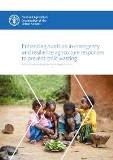
Enhancing nutrition in emergency and resilience agriculture responses to prevent child wasting: FAO's child wasting prevention action plan (2023–2024)
11/2022
As part of the United Nations Global Action Plan on Child Wasting, FAO requires USD 500 million to implement its action plan to prevent child wasting (2023–2024) in the 15 most-affected countries.
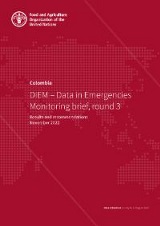
Colombia: DIEM – Data in Emergencies Monitoring brief, round 3
11/2022
This Data in Emergencies Monitoring (DIEM-Monitoring) brief shares the results of a third-round assessment conducted between July and August 2022 in Colombia.
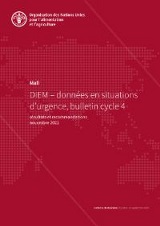
Mali: DIEM – données en situations d’urgence, bulletin cycle 4
11/2022
Ce bulletin sur le suivi Données dans les situations d'urgence (DIEM-Suivi) présente les résultats de la quatrième évaluation réalisée entre juillet et septembre 2022 au Mali.
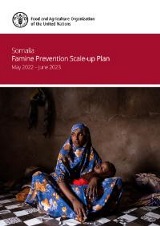
Somalia Famine Prevention Scale-up Plan: May 2022 – June 2023
11/2022
FAO’s scaled-up Famine Prevention Plan seeks to reach extremely vulnerable rural communities in areas at high risk of famine to avert further catastrophe and stem the rapidly rising numbers of persons displaced due to the prolonged drought. Deaths due to hunger, malnutrition and related diseases are on the rise.

